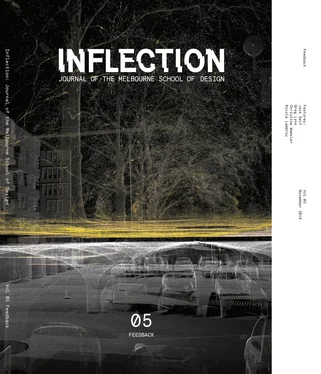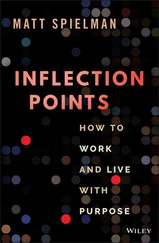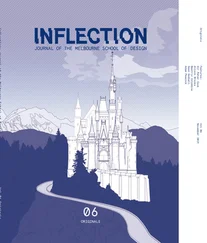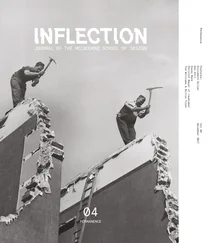Designers could acquiesce to a popular consensus dictated by political or economic influences; but the practice of design is uniquely positioned to critique, and maybe even start to arrest, the more undesirable directions that we find our society heading. Jil Raleigh discusses how the TreePlayer app she helped develop fosters a cultural awareness of nature in Melbourne’s CBD, using a combination of publicly-available data and design ingenuity. Similarly, Nicole Lambrou posits that deploying smart technology in eco-engineered landscape design can play a pivotal role in altering public attitudes towards climatic risk and resilience. In fact, it is the sophisticated knowledge and interpretation of these landscapes that determines our ability to meaningfully affect them. Nicholas Gervasi and Alexander Ford’s project refashions the monument into a dynamic force that speaks to the passage of time. Their proposal counterintuitively seeks to capture a temporal, fleeting phenomenon: a decades-old oil leakage from a wrecked World War II battleship, the U.S.S Arizona, becomes the site for reflection, homage and speculation. Gervasi and Ford imagine a monument that encompasses the present and future, not just the past.
Continuing squabbles over data ethics and privacy demonstrate that a proportion of those possibilities might not be all that desirable. 2 The daily movements and interactions of warehouse employees are being reduced to an efficiency calculation by sophisticated multinationals like Amazon and productivity gains are becoming dependent on constant surveillance and analysis. 3 James Bowman Fletcher focusses on the technical improvements made possible by feedback loops using the seemingly banal task of boiling water, and reflects on how productivity efficiencies that could hypothetically result in the increased free time for workers that is typically re-allocated to contracted time.
Aware of their claim to agency, practitioners start to push for a more socially conscious and integrated role for design. In our wide-ranging conversation, author and architect Jack Self suggests that designers can, and should, advocate for an ethical agenda in their projects. Curtis Roth explores the complexities of authorship and design’s submerged complicity for working conditions through an exploration of the thriving art-copying market in Dafen, in the Shenzhen province of China. Roth commissioned a series of reproductions from labourers, attaching an accompanying specification requesting that each painter also paint their surroundings, and that the reproduced painting be erased by a separate artist. The result is a series of complex, contradictory portraits that contain traces of the state’s fabricated agenda, the painter’s own intent, the authority of the designer and the squalid living conditions that make it all affordable. Roth’s provocation invites designers to consider the dense web of sociocultural, economic and labour conditions that professional authority distances them from.
By no means does Inflection vol. 5 claim to hold the answers to these provocations; rather, it posits a variety of ways to approach them. Our focus here is not so much the outcomes of data-driven design as it is the methodologies, processes and frameworks that designers employ to arrive at them: what do we choose to value, and how are those values expressed in our practice?
01Horst W. J. Rittel and Melvin M. Webber, “Dilemmas in a General Theory of Planning,” Policy Sciences 4 (1973): 155–169.
02Anthony Dunne and Fiona Raby, Speculative Everything: Design, Fiction, and Social Dreaming (Cambridge, MA: The MIT Press, 2013).
03Tom Simonite, “Grasping Robots Compete to Rule Amazon’s Warehouses,” Wired, https://www.wired.com/story/grasping-robots-compete-to-rule-amazons-warehouses/(accessed October 16, 2017).
NOTES ON POINT CLOUDS
Olivia Potter
The cover image of Inflection vol. 5 is a point cloud representation of the South Lawn at the University of Melbourne Parkville campus, and was generated from a scan produced as part of Ben Waters’ Studio 19: IMG.ING (Semester 2, 2017). Gregg Franz from FARO conducted this scan using LIDAR technology.
The car park itself sits below a grassed and tree-lined lawn, used by university students and professors to relax and catch sunlight between classes. These two levels (the car park and the lawn) were scanned separately and—because the technology measures the relative distances of point coordinates—the two scans of South Lawn were able to be stitched together to create a single swarm of points.
Designed by the architectural firm Loader & Bayley and completed in November 1972, at its time of construction, South Lawn was the only fully enclosed car park in Australia. Marked at one entrance by an 18 thcentury door from Dublin and at another by two statues of Atlas from the demolished Colonial Bank in Elizabeth Street, the otherwise almost hidden interior uses parabolic concrete profiles set on short columns to support the lawn above. 1The car park was used in George Miller’s film Mad Max (1979).
A LIDAR Scanner generates a point cloud by emitting rapidly pulsing (or continuous) laser beams towards objects. As it is doing this, the scanner also rotates around its vertical axis. Simultaneously, a mirror moves the scanner up and down. By turning on its horizontal axis, the scanner systematically runs a three dimensional sweep of its setting. When the laser beam detects it has hit a surface, energy is bounced back to the scanner and a timer records how long this has taken. From this information, a distance can then be calculated to record the location of a single point. 2
This process is repeated thousands of times; points are recorded and fed back to the scanning technology to generate a cloud of relative positions in space. Each of these points is accompanied by an RGB reading, produced from a series of photographs taken by the device’s inbuilt camera. This technology creates a highly accurate, fast and detailed three dimensional image of the scanner’s visible physical environment. This data and accompanying process of generating digital feedback holds countless possibilities.
01Heritage Council Victoria, “Underground Car Park,” Victorian Heritage Database Report (Department of Environment, Land, Water and Planning, July 27, 2018), http://vhd.heritagecouncil.vic.gov.au/places/3808/download-report.
02Leica Geosystems AG, “Laser scanning: Chapter 2 of 3 - How It All Works,” (video) November 20, 2012, accessed July 27, 2018, https://www.youtube.com/watch?v=1lDO1UevAJI.
Studio IMG.ING, South Lawn car park, University of Melbourne, 2017. Point cloud scan by FARO. Image reproduced with author’s permission.
HAROLD AS FEEDBACK’S FOIL
IMPROVISATIONAL COMEDY AND ARCHITECTURE
Sarah Hirschman
Architects speak about the needs of users with program diagrams in project proposals, and sometimes they perform post-occupancy surveys, but most often the ideas that drive a conceptual design aren’t ever actually tested in a real way, nor do they benefit from feedback. We’re left with a disconnect between intention and results. In comedy, the test of efficacy is immediate and results are clear—if someone laughs at a joke, it’s a success. Looking closely at the way humour works, then, could potentially reveal clues about how architecture might incorporate feedback into its design process. In his Jokes and Their Relation to the Unconscious, Freud writes that the joke is “a double-dealing rascal who serves two masters at once. Everything in jokes that is aimed at gaining pleasure is calculated with an eye toward the third person […] and this gives us a full impression of how indispensable this third person is for the completion of the joking process.” 1 The joke has two-way communication built into it; it is a call that demands a response to properly function. The joke is a social act as well as a creative one. Jokes invite responses, and while they might be quite different from those architects seek to induce, the way they operate as a deliberate exchange of information can teach us something about being consciously responsive in the design process.
Читать дальше












